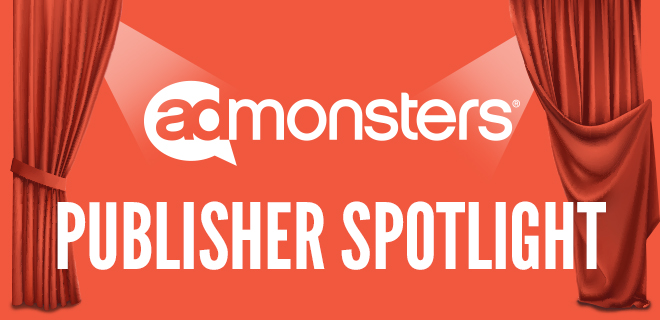
Amanda Gomez shares how the New York Post is going direct to buyers to future-proof revenue and capitalize on its first-party data.
Amanda Gomez, SVP of Revenue Operations at the New York Post, spends most of her days buried in spreadsheets, Slack threads and yield reports. But before she dives into any of that, she’s checking the trades and industry newsletters—because, in ad ops, you’re either ahead of the curve or playing catch-up.
“You have to stay on top of it,” she said. “Otherwise, you’re going to fail.”
Gomez’s typical day has grown more unpredictable as the New York Post adapts to the rise of deal curation and supply-path optimization (SPO) and a shift away from open auction and toward direct and programmatic guaranteed deals.
“Some days, I don’t even sit at my desk. My day starts at 5 pm when the meetings end,” she joked.
What grounds her through the chaos? In addition to being a marathon runner, Gomez is also a voracious reader, having run through over 100 books last year.
Asked for a standout from her recent reading list, she shouted out The Women by Kristin Hannah, a sweeping historical novel about a Vietnam War medic. It brings to the forefront the often overlooked sacrifices women make for others, which echoes Gomez’s experience as a team leader.
“Some days, my priorities go out the window because the team needs come first,” she said. “Nothing ever goes exactly as planned, but that’s just part of the job.”
Gomez spoke to AdMonsters about unifying her teams around first-party data and bringing that data directly to buyers.
Andrew Byrd: How is the New York Post’s first-party data strategy evolving, and what results are you seeing? 
Amanda Gomez: A few years ago, we had very little first-party data, despite being a 200-year-old brand. So when Google first announced cookies were going away, we incorporated a plan into our budget, brought in Prohaska Consulting to guide the strategy and partnered with Permutive to set up our customer data platform and data management platform. Even as cookie deprecation got delayed, we pushed forward.
We built our internal ID graph and scaled from a million authenticated users to several million through newsletter growth, membership, comments and Google One Tap. That’s helped us improve our signals, enrich our data and create stronger audience segments. We’ve also partnered with TransUnion to help resolve anonymous users.
It’s been a major investment, but it’s improved collaboration across teams—from mar tech and BI to marketing and ecommerce. I’ve been at the Post for almost 12 years, and even though I’ve worked with my tech team that whole time, we didn’t know what each other did until this first-party data project.
AB: Tell us about the New York Post ID and why you built it.
AG: It powers our ability to tie users together across touch points. Without it, none of the progress we’ve made with data would be possible. It enables us to activate that data in a meaningful way across teams, campaigns and platforms.
AB: How are you approaching SPO, and how does your integration with The Trade Desk’s OpenPath fit into that?
AG: SPO is a balancing act. Our ads.txt is bigger than I’d like, but sometimes [having more demand partners compete for your inventory] is where the money comes from. Still, we try to be intentional, like capping the number of resellers we work with.
We’ve seen vendors with 40+ ads.txt entries, and that’s just not sustainable. It clutters the supply chain, slows the site and can even dilute CPMs.
On the video side, it’s an even bigger challenge. That’s where OpenPath has helped; it gives us a more direct relationship with The Trade Desk. Beyond better transparency and insights into our bidstream, it’s opened the door to broader conversations, including performance data on their UID2 across SSPs, something we wouldn’t get otherwise. If more direct-to-DSP options emerge, we’d consider them.
AB: The New York Post is putting more emphasis on direct deals, similar to other news pubs like The New York Times. What sparked that shift, and what’s been the challenge in leaning more into direct?
AG: We’ve always had a direct sales team, but their success has fluctuated over time. We currently have a strong team that understands digital, which is crucial for a legacy brand like ours that began in print. Our growing first-party data capabilities partly drove the shift toward more direct deals: Once we had that data, the next step was figuring out how to activate it.
We’re leaning into our strengths, like entertainment and sports, and building franchises around them that the sales team can take to market. A great example is our Virtual Reali-Tea brand on Page Six, which began as a podcast and has since expanded to include events and, soon, our first-ever Virtual Reali-Tea Awards.
We’re not relying on the open market to return to its former state, so the move toward direct is primarily about future-proofing and leveraging our strengths.
AB: Are there any emerging ad tech trends or shifts you’re especially excited or concerned about right now?
AG: Curation is definitely top of mind. Everyone’s talking about it. It’s bringing in revenue, but depending on the SSP and partner rules, the trade-offs can be tricky.
More broadly, everything we’re doing right now—whether it’s curation, first-party data or SEO—is about finding the right balance. It all feels more high-stakes than in the past. The pace of change is so fast, and while we’ve seen industry shifts before, this time feels different—like we’re hitting some kind of turning point. I honestly don’t know where we’ll land, but a year from now, I think the industry could look very different.